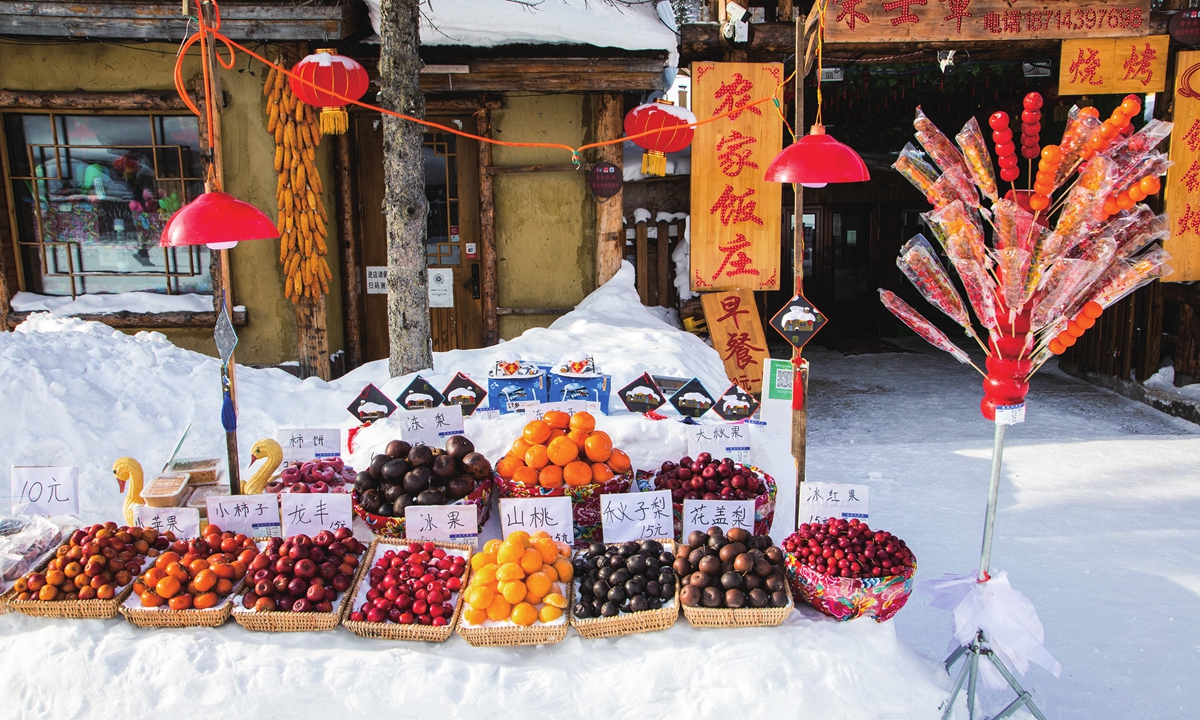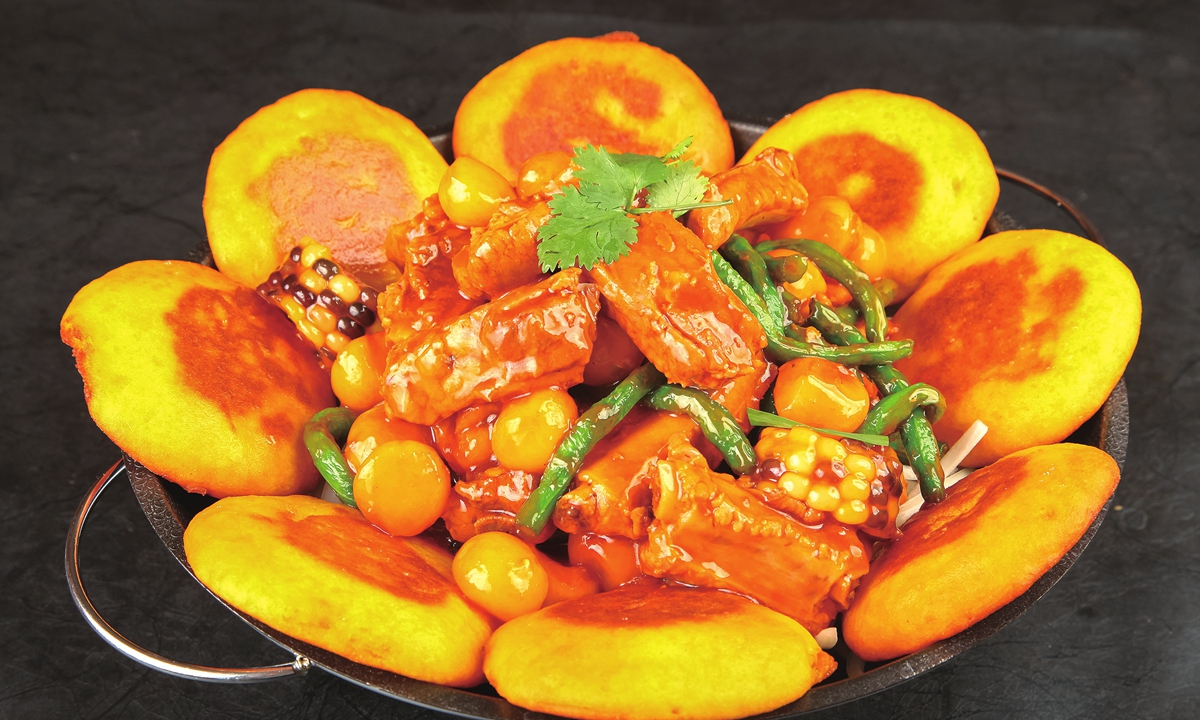
A vendor in Harbin Photo: VCG

Tie Guo Dun, a Northeast China's dish centered on a deep cast iron pot Photo: VCG
With the winter tourism boom in Harbin, Northeast China's Heilongjiang Province, it's not just the stunning ice and snow scenery that's drawing tourists from all over the country. The local cuisine is also causing a stir on the internet.
Tourists across the country are sharing their food diaries about Harbin on social networks, praising it for its generous portions, satisfying flavors, and down-to-earth taste.
Harbin's cuisine is a delightful fusion, shaped by the city's historical and geographical context.
Heavily influenced by neighboring country Russia and the influx of settlers from provinces such as East China's Shandong Province in East China, Central China's Henan Province and North China's Hebei Province, this cultural melting pot has given rise to a culinary scene that beautifully combines Eastern and Western flavors.
Domestic fusionDuring the late Qing Dynasty (1644-1911), a mass migration started. People from areas like Shandong, Henan and Hebei provinces migrated to Northeast China, a region with large areas of uncultivated land.
The migrants also brought their culture and language to the land, while the immigrants brought a variety of culinary styles to Harbin, enriching its food culture.
Before this migration, the local diet of the ethnic majority in the Northeast focused primarily on meat with fewer grain-based foods.
The arrival of ethnic Han Chinese settlers introduced their food habits and agricultural practices to the area, significantly diversifying the local diet.
The fusion of culinary practices led to a blend of ethnic Manchu and Han Chinese food cultures, creating a unique culinary style which combined the distinct flavors of Manchu dishes like barbecue, hot pot, and stew with Han Chinese cooking styles like braising, frying, and stir-frying.
For example, G
uo Bao Rou, a classic Northeastern dish, originated in Harbin in the early 1900s.
Created by Chef Zheng Wen for Russian dignitaries visiting during the Qing Dynasty, its unique flavor profile, featuring a sweet and sour sauce adapted for Russian tastes, showcases the fusion of Eastern and Western influences.
The pork used in
Guo Bao Rou is typically sliced pork loin, which is coated in a starchy batter.
The dish's sweet and sour sauce is a simple combination of white sugar and white vinegar, often with a pinch of salt added to enhance the flavor.
In Harbin, the traditional way to prepare G
uo Bao Rou involves adding only garlic to the dish, although variations with additional vegetables like carrots, ginger, scallions, leek, and cilantro are found in other parts of China.
During cold winter days, local eateries are often swamped by tourists, queuing to taste an authentic
guo bao rou.
Harbin's proximity to Russia and its role as a hub on the Trans-Siberian Railway brought a significant Russian influence to its cuisine.
A blend of East and West The hearty, wheat-based Russian bread, known locally as
Da Lie Ba, similar to Russian black bread, is also commonly found in Harbin.
Tourists often express surprise at the size of these large loaves, with some playfully noting that they are bigger than their faces.
Hong chang would be another case in point.
The smoked, garlic-flavored red sausage resembling Russian kielbasa. Readily available throughout the city, it reflects Harbin's Eastern European influences.
Some local residents even give out hong chang for free to tourists, thus contributing to the warm and welcoming atmosphere of the city.
"I was born and raised in Harbin. Seeing so many tourists coming from all over the country to visit my hometown and support the city's tourism makes me very proud. I feel that such a small act of kindness is just something that I should do," said Yong Di, an influencer on Douyin with 115,00 followers who was distributing
Hong Chang samples.
Hong Chang was featured in multiple travel journals on social media.
A post about
Hong Chang by Asun, a tourist from Southwest China's Chongqing Municipality garnered nearly 150,000 likes and thousands of comments.
In the video, Asun noted that a lot of Harbin locals volunteered to give free rides to tourists.
When he dropped them to the airport at the end of their trip, he gave them some hong chang as a souvenir, along with a note that said: "We are the messengers of the city's warmth. I love my hometown. I love you friends who travel from afar to Harbin and I hope you love Harbin back."
As seen on social media, the locals' acts of generosity, coupled with Harbin's unique culinary offerings, leave a lasting impression on tourists.
The city's warmth does not just lie in its winter attractions, but also in the hospitality and flavors that make Harbin a memorable destination.